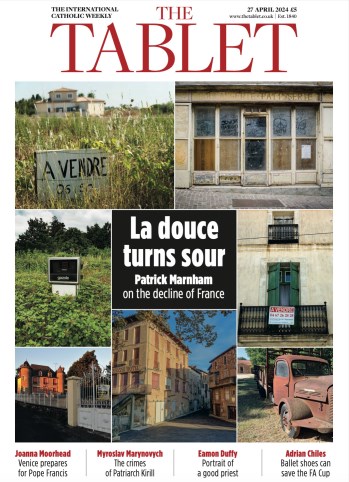This year marks the 200th anniversary of the restoration of the Society of Jesus. In 1773, under intense pressure from Catholic European monarchs, Pope Clement XIV suppressed the prestigious but also much maligned religious order “for the peace and tranquillity of the Church”. The Jesuits continued to function in Imperial Russia under Catherine the Great, who ignored the papal bull of suppression. With 600 priests and brothers, a shadow of its strength in 1750 (22,500 members), the society re-emerged from Russia when, on 7 August 1814, Pope Pius VII decreed it back into existence.
The anniversary of the restoration presents an excellent opportunity to review the history of the Jesuits, and John O’Malley is the right historian for the job. A generation ago, O’Malley’s book on The First Jesuits (1993) spurred a burgeoning field of research on the Jesuits from the early-modern period: 1540 to 1773. The history of the restored society has received less attention. O’Malley’s expertise in modern church history is evident in his riveting What Happened at Vatican II (2008). His newest book concisely and cogently puts together the early-modern and modern periods for a wide twenty-first-century audience.
O’Malley’s history is a dynamic one. It is about the identity of the Jesuits, evolving over the centuries within a “tradition of adaptation to persons, places and circumstances”. O’Malley proposes dividing that history into five periods. In the first, “the prologue”, Ignatius of Loyola and his companions committed themselves to becoming “a brotherhood of Jesus”. The next four periods encompass a series of foundings.
The original founding in 1540, which gave the small brotherhood an elaborate organisation, was “for ministry, especially in a missionary mode”. The fourth Jesuit vow was a vow to be a missionary, not a special oath of obedience to the Pope. Articulating “coherent presentation of ideals and goals”, the constitutions contributed to a distinctive Jesuit identity. So too did Ignatius’ Spiritual Exercises, which underpinned a new ministry within the Church: the retreat.
Around 1550, in a second founding, the Jesuits took “the momentous step” of expanding their ministries to encompass a new identity: teachers in their own schools. They ran their colleges according to the Renaissance pedagogical ideal of producing “men of integrity, dedicated to the common good of Church and society”. Their educational ministry led directly to another identity: the Jesuit as intellectual.
The restoration in 1814 represented a third founding. Timing was crucial. Pius VII restored the Jesuits as Europe witnessed a larger restorationist effort to reverse the political and social developments unleashed by the French Revolution. The Jesuits readily aligned themselves with a Church that saw itself as a bulwark against these developments. “Although there were exceptions,” O’Malley writes, “the Jesuits of the nineteenth and early twentieth centuries were inimical to the values of ‘the modern world’ or at least highly sceptical of them.” The exceptions will make for fascinating study.
Inert contrarians the restored modern Jesuits were not: “they set about their ministries with energy and enthusiasm.” They rebuilt their reputation as educators. Expelled from several European and Latin American countries, they revitalised their ministries as missionaries in the Americas, Africa and Asia. They took on the new task of editing periodicals “aimed at both professional and general readerships”. A restored Society of Jesus went in search of its roots and as of the late nineteenth century began publishing volumes of the documents that shaped its evolving identity and that showed that the society was “more flexible and less moralistic” than had been supposed in 1814. Jesuits in turn became experts at applying historical methods to the study of liturgy, spirituality, the Bible and theology.
The fourth founding came in the wake of Vatican II (1962-65) when the membership of the society soared to 36,000. The Jesuits underwent a substantial and at times fraught process of self-review in which they sought to adapt their ministries to modern circumstances. They committed themselves to pursuing dialogue with other religions and “to build a fuller expression of justice and charity into the structures of human life”.
O’Malley writes, as always, with enticing clarity. His short book provides an excellent outline of 474 years of history, addressing turning points, accomplishments and controversies. The pathos in the assessment of the suppression is palpable. It was a “tragedy” and a “calamity”, often implemented with brutality by governments. Many Jesuits “never recovered from the disorientation, the mental anguish and the sense of loss” caused by the suppression. Just when the Church needed the Jesuits, its “single greatest intellectual asset”, to respond to the challenges of the Enlightenment, their libraries were dissolved and their network of schools dismantled. The inclination to admire and sympathise with O’Malley’s Jesuits is irresistible.
16 October 2014, The Tablet
The Jesuits: a history from Ignatius to the present
La douce turns sour
 Loading ...
Loading ...
Get Instant Access
Subscribe to The Tablet for just £7.99
Subscribe today to take advantage of our introductory offers and enjoy 30 days' access for just £7.99



What do you think?
You can post as a subscriber user...
User Comments (0)